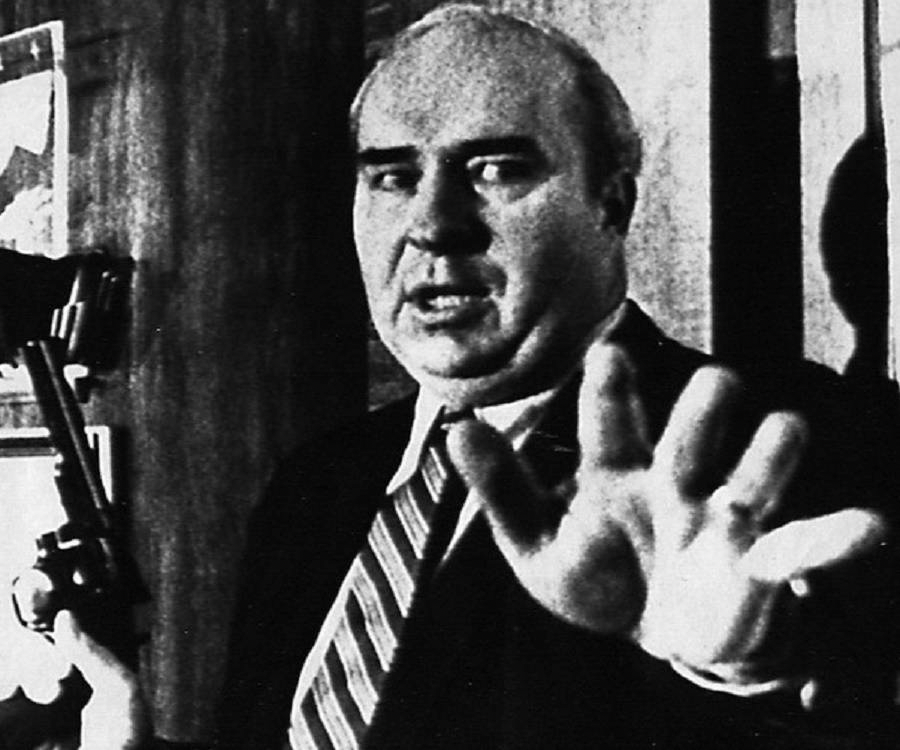Adam is an international treasure
This sort of thing is so common that it even has a name: gadgetbahn.
How deep inside your own ass do you have to be to propose MODERNISING THE ENTIRE RAILWAY NETWORK to be a viable solution to anything?
That’s a Polish company apparently. My fellow compatriots, you fucking know how rail operates in Poland. We bought high-speed trains that couldn’t go at any high speed because there weren’t any actual rails that would allow them to. Whenever there is even small maintenance work of a small tract of the network half of the fucking country is ground to a standstill. Honestly, building a whole new separate rail system for your invention would be a MORE REASONABLE proposition, it probably wouldn’t be much more expensive, and wouldn’t paralyse the existing network.
This sounds like a great setup for an episode of “Well There’s Your Problem.”
Are these guys any relation to that “Newag” outfit that tried to brick a train after detecting a third-party repair?
doesn’t seem so, but they do brag about their involvement in related startup “Hyper Poland” (it’s about hyperloop clone or something like that) and some of Musk’s business. CEO is a finbro manager, but they seem to have some actual engineers and some people that worked in railway industry in the past. deeply unserious overall
I’m really tickled by the fact that we can’t fully automate trains yet. I never thought about it, but put into perspective how asinine self-driving cars are if we can’t achieve the same thing with a train, something that is vastly more tractable and less chaotic than road traffic.
a couple years back I recall seeing some interesting stuff re the nyc subway (link1, link2)
leaving aside how hilariously far they’ve overrun constructions and estimations (wow nyc is bad at this), it was kinda wild to learn that they didn’t even know where trains were during operation. made perfect sense in context with the info, but still wild
It’s not so much that self-driving is easier than automatic trains, but that it’s easier than passenger rail in the US at all. Everyone hates rail here it’s wild, and the safety expectations in the US are (weirdly) much lower for cars than anything else.
The video actually mentions why it’s not quite possible yet, but it’s slowly moving towards that direction. It’s just that the EU train system is very FUBAR’d due to all the 20th century conflicts
@db0 u wot m8
❓
due to all the 20th century conflicts
I assume he’s referring to the same question I was asking: did you just extrapolate this from the phrase “fucked up, disastrous mess” (referring to the sheer number of different systems in Europe?), because I think the big long reply above seriously undersells the fact that “20th century conflicts” aren’t even mentioned or gestured at in the video. There’s a map showing…different countries…but while 20th century conflicts changed various borders in Europe, they aren’t the origin of the borders between countries in Europe, or the origin of different European countries developing their own independent rail systems without any centralised plan - because they’re different countries, and the various bodies which today unify much of the continent only began to come into existence after the Second World War.
If we were talking about Former Yugoslavia, you’d actually be right! The integrated rail infrastructure of that region was completely devastated by the 1990s. But that’s not the focus here.
I didn’t say he explained why this is the case in this video. I believe he may have talked about it elsewhere, but long-story short, European nation-states didn’t want unified railroad systems because they were afraid their opponents will use them to invade them during war.
That does clarify the point, but I also don’t think that it’s true. It may well be that a major reason proposals for unified European rail never got off the ground before recently was that European countries rejected such proposals on grounds that it would make it easier for them to be invaded. But the rail systems in different European countries nonetheless developed independently, using different technology and standards, mostly (arguably) in the 19th century.
This complex process doesn’t reduce to 20th century FUBAR, even insofar as diplomatic and security considerations were involved in its evolution (and yet of course beginning in the 19th, not the 20th, century).
I gotta be honest with you, at this point I don’t even know what you’re arguing for 😅
@YouKnowWhoTheFuckIAM It goes back to the mid 19th century. In an era where battlefields were controlled by massed infantry with rifles, railways revolutionised the process of mobilizing for war—they who ran the tightest timetables got to the battlefields first. But as a result, frontiers moved around and the networks fractured. And shit like the Russian Empire deliberately choosing a different track gauge to stop German and Austrian troop trains running on their tracks during an invasion.
I still think that this represents a bias towards a military-geopolitical interpretation of history that’s not wholly sustainable, in spite of its appeal. In the Russian Empire case, I’m quite certain that that’s a popular myth, because I know that it is certainly the case that when the first railway infrastructures were being built, the political powers, administrators, and engineers responsible were as much influenced by technological and physical geographical imperatives as they were by geopolitical. The Russian Empire’s decision to use what would become the Russian gauge was multi-factoral - indeed looking it up, it appears that they were persuaded by Brunel’s own preference for a wide gauge, which was famously thwarted in the early development of the British railways.
If what you took away from that is “EU trains are FUBAR because something something conflicts” then you weren’t paying attention. Automating trains isn’t that hard to do (London’s Victoria Line has been more or less self-driving since 1967) with some kind of transponders-and-in-cab-control arrangement, but they still to this day have to have a train operator (i.e., a driver) in the cab. This is not because the automation can’t make the train go and make it stop again at the right place, it’s because actually pushing a lever back and forth is only a tiny part of the job of driving a train. The rest is about knowing rules many of which are extremely safety-critical, evaluating rules, and applying knowledge and experience to make sure those rules are correctly applied. For instance, you can put a passenger train on a fenced-off track with no intermittent route changes and it can drive itself from A to B using existing technology. The problem, however, is what happens if something goes wrong? A wire connecting a trackside transponder fails – the train will stop because it doesn’t know what to do. A foreign body is detected on the track in front? The train will have to stop until someone moves it. And not only that train will be stopped, but all the trains behind it will be stopped until someone can get there in person… and let’s hope they don’t have to use the strech of track that’s blocked to get there.
So you still need a human on the train to resolve these problems - a signal failure means a two-way conversation with the signalbox to confirm what’s going on and get given manual permission to proceed, usually at a reduced speed. A foreign object can be examined on the spot, moved if the driver is able to do so, and the track checked over to make sure it hasn’t been damaged by the impact. And this is a very simple example. Driving a train is one of those jobs (a lot like being a pilot, and few people seem to be talking about getting rid of airline pilots) which is 99% routine but 1% exceptions, and the possible number of exceptions is nearly infinite. Automation in the cab is certainly a useful thing just as automation in your car is a useful thing and for the same reason - it frees up expensive human eyeballs and brains to worry less about the repetitive mechanics of the 99% routine so they can pay more attention to any potential 1% exceptions coming down the line. Automation simply can’t meet the safety requirements – there’s no “acceptable number” of accidents or fatalities in railway operations unless that number is zero.
There are, to be fair, some extremely niche operations where full automation can and does work – mostly on isolated metro systems where the infrastructure is expansive enough, there are no level crossings, and the line operates effectively in a vacuum. Even in that case, the Victoria Line can’t meet the safety requirements as the tunnels have no side walkways and passenger evacuation means walking people off through the middle of the cab onto what have to be assumed to be live electrical rails without going through complex safety procedures to be sure they’re safe.
Railway safety in Europe is nothing like what a lot of people think it is (i.e., akin to highway safety). It’s taken very, very seriously and no compromises are ever acceptable. Even many rules which seem hard to explain today exist because a massively improbable series of failures at some point in the past caused disaster or near-disaster and could still repeat themselves today if not for this rule. It’s complex, sure, but for a system that’s undergone 200 years of continuous evolution and development and still remains extremely safe it’s anything but FUBAR.
mostly on isolated metro systems where the infrastructure is expansive enough, there are no level crossings, and the line operates effectively in a vacuum.
Also, critically, metro systems are relatively “dense”, so you can have a human respond to an exception quickly - you’re always in a populated area with not much space between individual stations.
I’m also wondering what the ROI is on automation costs and maintenance thereafter versus paying a conductor to just drive the thing.
In Copenhagen, the metro is fully automated and there are discussions of doing the same with the commuter rail (all grade separated). I think the more interesting benefit to the commuter rail is they will run closer together in time and run more frequently at night (every 10 vs 20 or 30 minutes)… But I don’t think the financials would ever really pay for the upgrades needed…
The CPH metro also has short trains - evacuation of a three-car train is substantially less difficult than the safe evacuation of, say, a Victoria Line train - 133m long, with a crush load of 1,200 people and no side walkways. You’re right that the benefit here isn’t so much in cost savings (most trains still have at least one staff member on board) as it is in being able to run short trains at low headways.
Other thing to add to this is that there’s just one or two people in the train providing service for hundreds of other people or millions of dollars worth of goods. Automating those people away is simply not economical, not even in terms of the headcount replaced vs headcount that has to be hired to maintain the automation software and hardware.
Unless you’re a techbro, who deeply resents labor, someone who would rather hire 10 software engineers than 1 train driver.
“Deep tech startup” == very good at digging deep in public infrastructure funds, presumably











